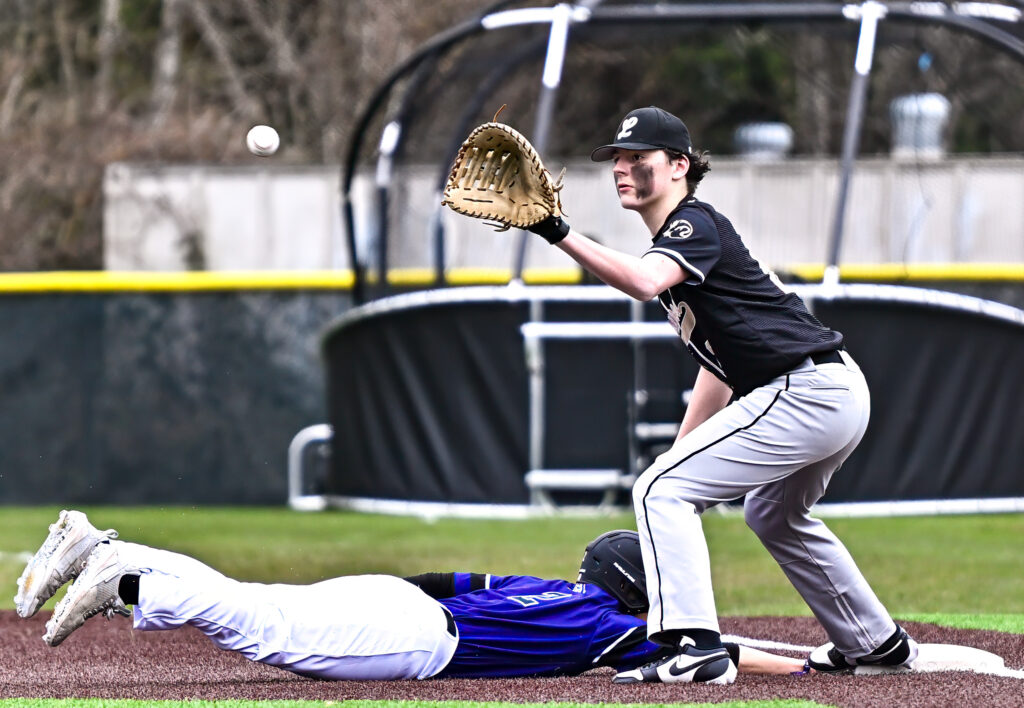NIL
Transfer Portal Closed With Crazy Number Of Entries, But Negotiations Ongoing
Congratulations to your favorite college football team if it survived the 10-day transfer portal period without losing multiple key players to opposing teams with larger checkbooks. The transfer portal, which started over a week ago, might not have been as entertaining as the winter period, but we certainly saw a trend of players looking for more playing […]
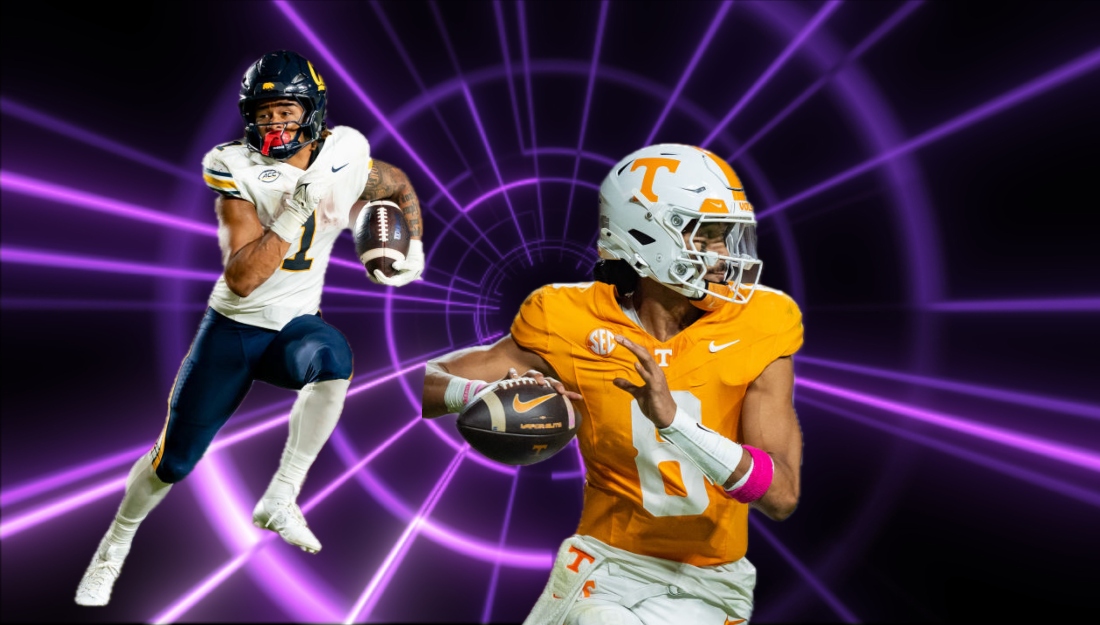
Congratulations to your favorite college football team if it survived the 10-day transfer portal period without losing multiple key players to opposing teams with larger checkbooks.
The transfer portal, which started over a week ago, might not have been as entertaining as the winter period, but we certainly saw a trend of players looking for more playing time or a lot more money. Usually, the winter period is when we see the major transactions, which is an easy way to characterize the transfer portal now.
For the past few months, general managers across college football have been scouring tape and talking to agents while trying to decide which athletes could actually help their team within a budget. One of the most interesting parts of this period has been how the House settlement forced some teams to start writing big checks for what they see as key contributors.
If you don’t think one of your favorite athletes was testing their coaches by “contemplating” an opportunity to enter the transfer portal, you clearly do not understand how the transfer portal works at this stage in college sports.
Nico Iamaleava Started The Portal Period With Fireworks
This recent period started with a bang, thanks to Nico Iamaleava leaving Tennessee for what his family hopes are greener pastures at UCLA. And he’s not landing in Westwood alone, as his younger brother, Madden, will follow him from Arkansas.
One of the most important aspects of the 2025 spring window was the number of players who entered the portal and found new homes. According to ON3, there have been more than 4,700 entries into the portal during this cycle, which is an astonishing number given the number of days it was actually open.
Did everyone find a home? Absolutely not. While it’s fascinating to see the number of players who decided to test the waters, only half of them settled elsewhere.
If you’re wondering why coaches detest this spring period, most of it centers around not knowing who’s going to be on your team at the end of the ordeal.
Transfer Portal Closing Doesn’t Mean Players Have To Find A Home
Even though you might think the period closing means your team won’t add a player or two, this is only the beginning for athletes looking for a new home.
As the portal closes, now comes the work for a number of coaches in college football. Seeing that you only have to enter your name into the portal database during the 10-day period, players can take their time finding a new school.
“I can’t tell you how many times over the past two weeks I’ve had someone reach out to me, just to make it look like I’m interested in that certain player,” one Power-4 generl manager told OutKick. “They reach out to us, then turn around and tell the current school that they have another offer, when in reality we haven’t discussed numbers. It’s dirty out here, especially over the past two years. But now that we’ve overpaid for certain athletes, which include backups so that another school won’t poach them, the word spreads that we have money to offer.
“This is all one big game of chess, and a lot of these ‘agents’ are playing checkers. We’re not going to fall for a trap. Do these representatives think that we don’t talk to each other? I know how much money the starting offensive lineman is making at our rival school, and it’s because I’ve spoken with someone close to the program. Sometimes, these guys are playing themselves.”
Right now, athletes are lining up official visits to schools that have piqued their interest. Players have until the summer semester starts to enroll at their new school, which means they don’t have to rush a decision. But if they are going to sign with an NIL collective for a pay raise, schools are rushing to get this done before the House settlement is approved.
Why? Schools are working around the upcoming revenue-sharing cap by front-loading deals for players, which would keep a good chunk of their overall salary off the books and would not count toward their settlement cap. And since Judge Claudia Wilken is expected to rule in the next few weeks, there is a rush to sign players under the NIL “banner,” which is actually a pretty smart move.
Not Every Player That Enters The Portal Will Find A Home
The unfortunate situation for a number of players entering the portal is that they will not find what they were seeking. If you don’t have a spot to land before entering, then there is a very good chance that this could become a tricky spot. Also, getting outraged at “tampering” with players is a waste of your mental space.
If schools aren’t tampering in some form or fashion, then they aren’t doing their jobs. This is also why having a good agent to represent you is key to making the transition as smooth as possible. General managers know what they are looking for, and it’s their job to make sure the agents currently in the college football business know what positions are of need.
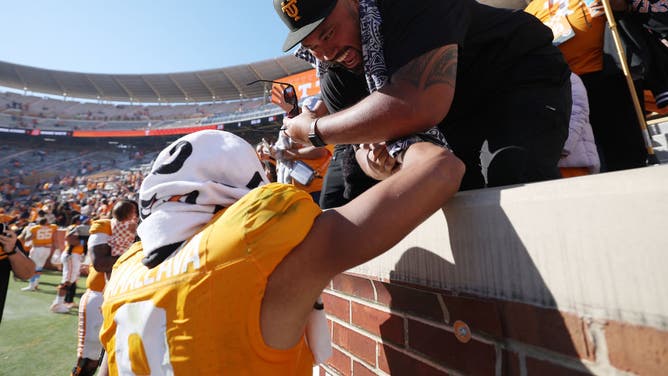
Nico Iamaleava and his father celebrate after a Tennessee victory. (Photo by Donald Page/Getty Images)
While there will be plenty of athletes who have a home this time next month, the other side of the equation is not as fruitful. Many players enter the portal off very bad advice from those who advise them. Just because your buddy tells you that another school will double your pay doesn’t mean they should trust everything that’s being proclaimed.
Now players are learning the hard way that the top-tier school wasn’t interested, but you’ve already burned a bridge by entering the portal, while trying to bargain for more money. And let’s not forget that some athletes are told that they are much better than they are, which leads to chaos once they enter their name into the portal.
The point is that we are still dealing with a system in college athletics that is leading to some very bad decisions, along with expensive contracts. While many players are worth the amount, given the current market, some of them will be playing at a lower-tier school compared to the one they just left.
For many players, it’s a gamble that they thought was worth taking. But many are finding out that they should’ve just taken the payday that was offered and prepared for next season.
NIL
NCAA Baseball Tournament Preview – Bridgewater St.
By Jim Fenton BRIDGEWATER, Mass. — The Bridgewater State University baseball team is once again opening the NCAA Division III tournament against a nationally ranked opponent. When the Bears face Endicott College on Friday morning at Alumni Park starting at 10 a.m., it will mark the fourth year in a row that BSU will be facing a team […]
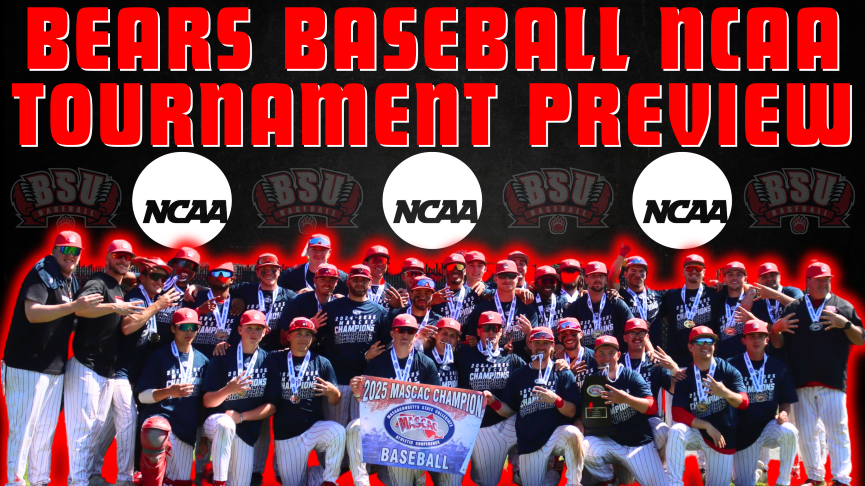
By Jim Fenton
BRIDGEWATER, Mass. — The Bridgewater State University baseball team is once again opening the NCAA Division III tournament against a nationally ranked opponent.
When the Bears face Endicott College on Friday morning at Alumni Park starting at 10 a.m., it will mark the fourth year in a row that BSU will be facing a team in the top 25.
The Gulls (38-4) are currently No. 3 in the American Baseball Coaches Association poll and No. 4 in the D3baseball.com poll.
In 2022, the Bears started the tournament by facing host Cortland, which was No. 8 in the nation, and in 2023, BSU also hosted Endicott, which was ranked fourth in the country, in the first game.
Last season, the Bears traveled to Pennsylvania and played the tourney opener against Penn State Harrisburg, which was 11th in the nation.
BSU lost two of those three games with a 2023 win over Endicott, 4-2. The Gulls then rallied to earn four straight victories and the regional championship, defeating the Bears, 6-0, along the way.
Endicott is one of two nationally ranked teams in the Bridgewater Regional this weekend.
Concordia University of Austin, Texas (33-11) is No. 19 in the ABCA poll and 24th in the D3baseball.com rankins. The Tornadoes will open against Oswego State of New York (27-13) at 1:30 p.m. Friday.
BSU faces a tough test in the Gulls, who started the season 8-3 and have gone 30-1 since March 19 with the lone loss to Trinity College of Connecticut.
“We’ve just got to play our game,” said Bears coach Greg Zackrison, who has taken the program to four straight NCAA tournaments for the first time since 1996-2001.
BSU lost to Cortland, 4-3 in 10 innings, on a walk-off home run in 2022 and dropped a 5-4 decision to St. John Fisher in the second game.
In 2023 at home, the Bears upset Endicott, then lost to Johnson & Wales, 10-0, and the Gulls, 6-0.
Last season, BSU had a 3-0 lead over Penn State Harrisburg but lost, 5-3, when the hosts scored twice in the ninth. The Bears were eliminated by Elizabethtown, 8-3, after holding a 3-0 lead.
“We’ve had some tough losses in the regionals,” said shortstop Kevin Lindsay (East Bridgewater, Mass.). “But we’ve got a lot of experience on this roster.”
Said second baseman Scott Emerson (Peabody, Mass.), “I think we get better and better every year in the regional. The record doesn’t show it.
But the experience is going to help a lot. We still have a lot of guys from previous years. We’ll be prepared and hopefully will come out with some success.”
Hosting a regional once again should only be a boost for the program.
“I’ve got to give a lot of credit to the athletics department for really stepping up and helping out the baseball team and the student-athletes,” said Zackrison. “It shows what great support we have.
“It’s pretty cool to put it out there for recruits and alumni that we’ve having this here. It’s kind of a big deal when you start seeing not just local teams like Endicott but a team from Texas and from New York.”
The Bears have put together a 17-4 record at Alumni Park this season.
Their last road game was May 2 at Westfield State, and the game against Endicott Friday will be the eighth straight at home.
The BSU-Endicott winner plays at noon on Saturday while the loser has an elimination game at 8:30 a.m. that day.
“To know we’re going to get more games at Alumni with these seniors and the rest of the team, it’s something special,” said junior first baseman Ryan Flaherty (Duxbury, Mass.), who set the single-season BSU records for homers and RBI this spring.
“I couldn’t be more excited for this weekend. The camaraderie of this team, the culture, never backing down, that’s something that is going to carry over into this tournament.”
NIL
Nick Saban downplays need for college sports commission, urges unified NIL rules
During an appearance on the SEC Network’s “Paul Finebaum Show” yesterday, former college football coach Nick Saban said that he “doesn’t believe there needs to be a commission to resolve the issues of college athletics,” which President Donald Trump reportedly “wants him to co-chair,” according to John Leuzzi of USA TODAY. Saban noted, “I don’t […]
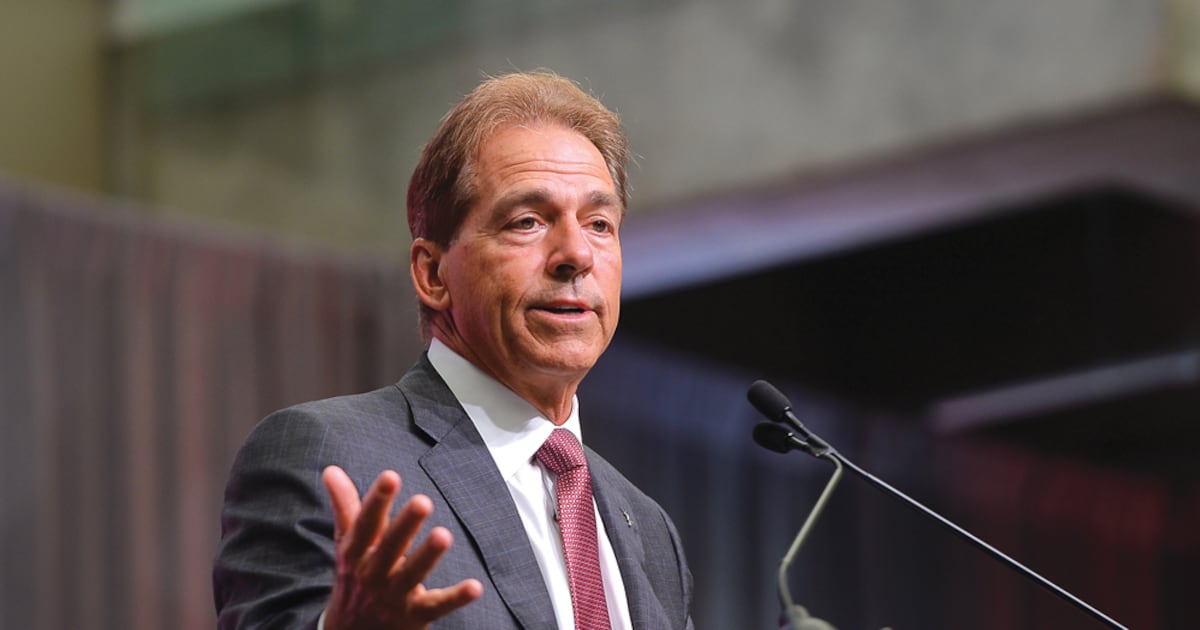
During an appearance on the SEC Network’s “Paul Finebaum Show” yesterday, former college football coach Nick Saban said that he “doesn’t believe there needs to be a commission to resolve the issues of college athletics,” which President Donald Trump reportedly “wants him to co-chair,” according to John Leuzzi of USA TODAY. Saban noted, “I don’t know a lot about the commission. Secondly, I’m not sure we really need a commission … the key to the drill is getting people together so that we can move it forward.” Saban: “I’m not opposed to players making money. I don’t want anybody to think that. I just think the way it’s going right now, it’s not sustainable and probably not in the best interest of the student athletes across the board or the game itself. So I think we need to protect the brand and the competitive advantages and disadvantages that are being created right now. And I think we can fix all that” (USA TODAY, 5/14). THE ATHLETIC’s Khan Jr., Vannini and Williams write while Saban’s comments “raised doubts,” sources said plans for the commission are “still moving forward.” The commission “is not official and still in the preliminary planning stages” (THE ATHLETIC, 5/15).
NIL
The Leading Voice: Mit Winter On Hoops, Life, And The Future
On Jan. 24, 2001, in Williamsburg, Virginia, the Tribe of William & Mary opened up a 32-11 lead at halftime. Although James Madison closed the gap, the Tribe held on for a 71-58 victory. For most in attendance, it was just another win. Yet, for the Tribe’s leading scorer that evening, it was another moment […]
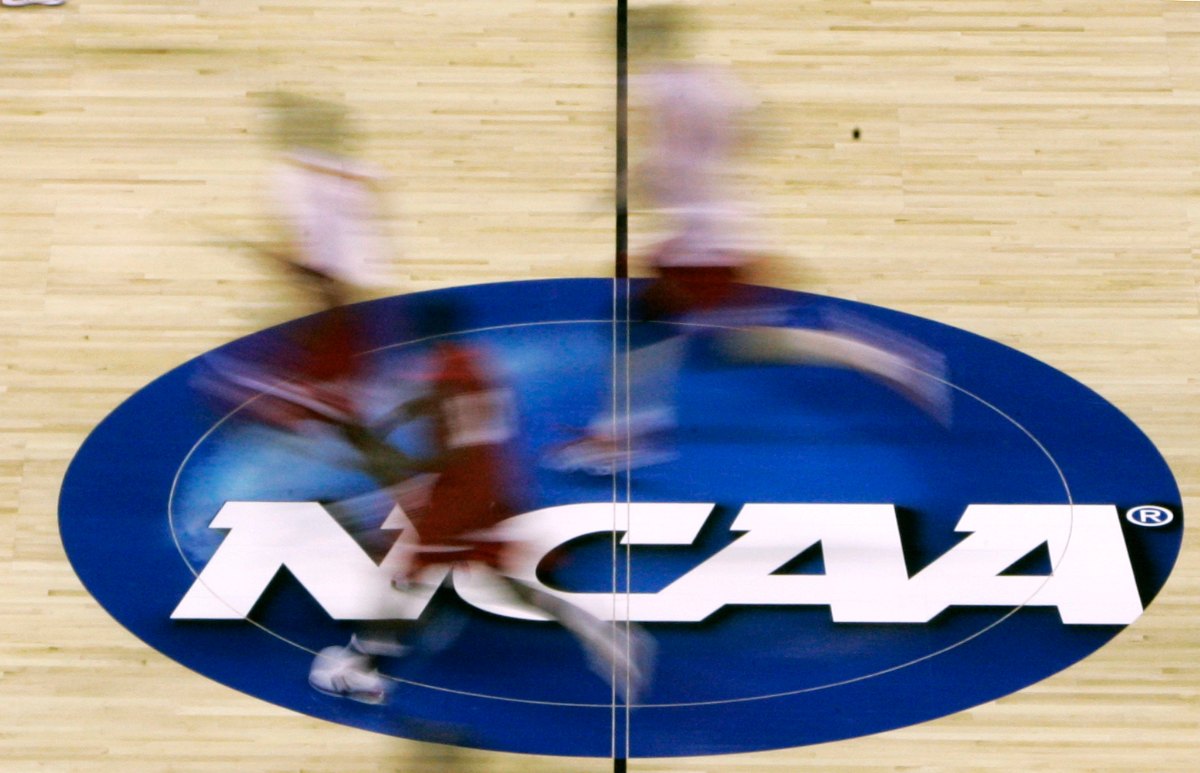
On Jan. 24, 2001, in Williamsburg, Virginia, the Tribe of William & Mary opened up a 32-11 lead at halftime. Although James Madison closed the gap, the Tribe held on for a 71-58 victory. For most in attendance, it was just another win. Yet, for the Tribe’s leading scorer that evening, it was another moment in a basketball journey that would later be mirrored in his legal career—a career that would see him leading another ‘tribe,’ this time in the complex world of college sports law and Name, Image, and Likeness (NIL) rights.
That leader?
Mit Winter.
The 6’7″ forward/wing combo, who finished his career at William & Mary with his name etched in the record books for three-point shooting and free throw percentage. Oh, and that game in 2001? Winter scored a then-school record 36 points and went 17-17 from the charity stripe. He is now one of the nation’s leading voices in NIL, House settlements, and student-athlete advocacy. His smooth jumper and knack for doing the dirty work are now replaced with sharp legal arguments and in-depth analysis of the evolving college sports landscape.
“I loved being a college athlete,” Winter reflects.
Now, as a seasoned lawyer specializing in the collegiate sports landscape, he’s protecting the student-athlete experience and, more importantly, ensuring that the future of college athletics remains a viable path for aspiring athletes.
Winter currently represents universities, collectives, agencies, college athletes, and college sports-related businesses.
If you’ve scrolled through your social media feed lately, chances are you’ve seen Winter breaking down recent court cases, analyzing NIL developments, or commenting on NCAA-related stories. His openness on social media has made him a go-to source for clarity in a field often clouded by legal jargon and shifting policies.
“I like to read and analyze,” Winter says. “That’s probably what led me to law school. Right now, to stay up to date on all of the change in college athletics, it’s constant news reading, gathering, and digesting the day’s information.”
Winter’s journey from college athlete to legal expert began with a simple realization: he wanted to stay connected to sports. “After graduating, I went to law school in San Francisco. In my head, I always knew I wanted to do something in sports,” he explains. “I enjoyed my sports law class and also interned with a sports agent.”
A bit of serendipity played a role as well. The law firm that hired Winter out of college was already working with the NCAA, and Winter found himself involved in a pivotal case.
“The main one was White vs. NCAA,” he recalls. “It was almost a precursor to big-name cases like O’Bannon, House, and Alston. It ended up settling, but it really got the conversation on college athlete compensation started. It sought to allow schools to increase their financial support for athletes through providing cost of attendance stipends.”
While the case did not go to trial, it served as a springboard for Winter’s career and for student-athletes.
That career path continued to evolve as whispers about compensation and student-athletes started to take shape.
“In 2019, you could see NIL conversations were heating up, and you could see that it was coming. States were starting to build their laws, and a lot of people were looking for answers,” Winter says. “With my background as a college athlete and my ongoing legal work with various college sports cases and clients, I really dove into everything that was happening with NIL, paid close attention to the changes happening, and stayed up to date on things as much as possible. So when everything changed in 2021, I was well-positioned to take it on.”
His deep understanding of both the athlete’s perspective and the legal framework has allowed Winter to navigate complex NIL discussions with a unique insight.
“I think it’s helped me a lot,” Winter says of his playing days. “Because it’s one thing to talk about how a law, regulation, or court decision might affect college athletes or college athletics as a whole. But it’s another to have actually been a college athlete and to truly know how something will affect an athlete’s daily life and experience.”
His experience and perspective haven’t just influenced his clients and made him a sought-after voice in discussions on where college athletics is heading.
On if the dust will ever settle and where it all lands:
“The dust will eventually settle,” Winter predicts. “To get there, we will most likely see a model with some form of negotiation or bargaining between athletes in specific sports and some entity representing the teams the athletes are playing on… Athletes on the teams that are part of the league entity will be negotiating the rules on things like player compensation and player movement with this new entity. It would look very similar to the models we see in the NFL, NBA, and other pro leagues, but still contain some elements unique to college athletics. I think a model like that would bring the stability to college athletics that people are looking for. We might need some new federal laws or to amend some to make this model a reality.”
Winter also reflects on some of NCAA history’s “what if” moments.
“I think the biggest misstep was in 2015 when the 9th Circuit affirmed Judge Wilken’s O’Bannon trial court decision that NCAA rules prohibiting NIL compensation violate antitrust law,” Winter explains. “If I were the NCAA then, I would have started to change and adjust. Instead, the NCAA did nothing with respect to NIL, and then a few years later, States just dove in and started making their own rules.”
They also lost a lot of time and public support, and have been trying to play catch-up since,” Winter continues.
He also points to the decision to appeal the Alston case to the Supreme Court as another critical mistake.
“Hindsight is always 20/20, but I think the NCAA was a little overconfident that the Supreme Court would be on their side regarding the antitrust issues. They were completely wrong.”
Despite the intensity and success of his legal career, Winter embraces his role as a parent.
“I’m enjoying this time right now to watch my older children play sports. It’s nice being a parent-spectator rather than planning out practice or figuring out substitution rotations as the coach, which I’ve done for my kids in the past,” he says with a chuckle.
As an attorney and a parent, Winter has a unique perspective on the growing opportunities for student-athletes. He quickly emphasizes the importance of keeping priorities straight amid the allure of big paydays.
“There’s a lot of news and information out there that people read and hear,” he said. “Yes, there is a lot of money to be made, but none of that happens if you don’t get your grades, don’t compete at a high level, and ultimately get better every day. It’s easy to be sidetracked by the money that is being thrown around right now.”
Reflecting on his time as a student-athlete, Winter couldn’t help but laugh at what he might have commanded in today’s NIL landscape.
“Not a lot,” he said with a chuckle. “But then again, there is some crazy money being thrown out right now. I had a really good sophomore and junior year. I bet I could have gotten something if I had tested the waters. But it all worked out.”
His modesty is evident, especially as the market is well into the six-figures for players of his size and ability to shoot from beyond the arc.
“These are college athletes, which makes them unique. They go to class. They have homework. Yet, at the power level, they are essentially professional athletes. It’s a unique dynamic.”
Wherever the next wave of NIL and collegiate sports regulations takes us, Mit Winter will be there—analyzing, advising, and advocating for his new Tribe.
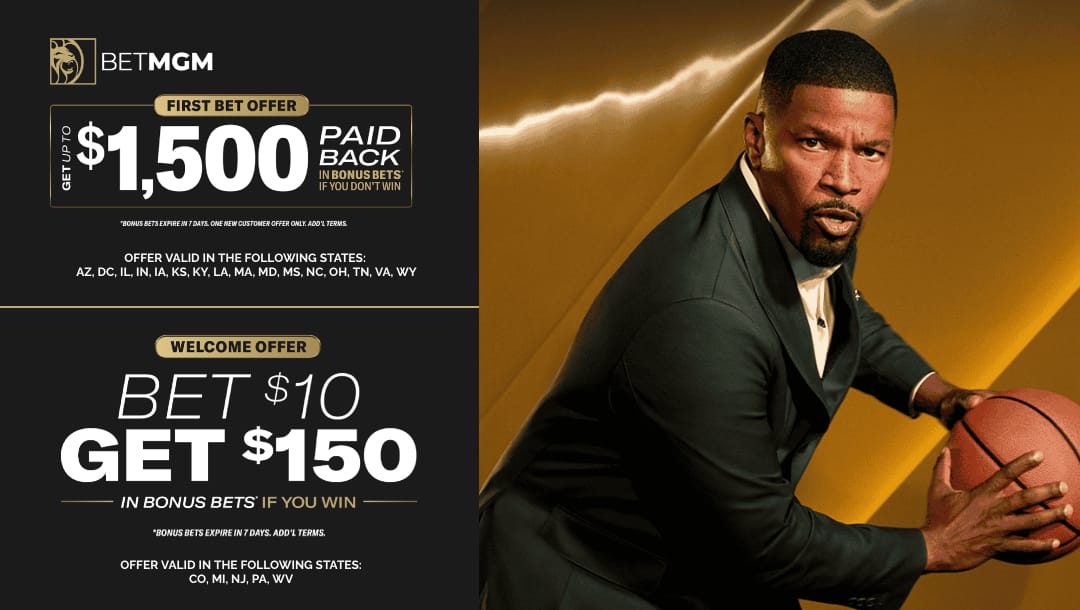

NIL
Russo on the potential of a presidential commission on college sports
With the House v. NCAA settlement still pending approval, The Athletic senior writer Ralph Russo joined us on Thursday’s edition of TexAgs Live to talk NIL and the transfer portal. Russo also delved into the Aggies’ offensive line entering Mike Elko’s second year as head coach. Key notes from Ralph Russo interview The idea of […]
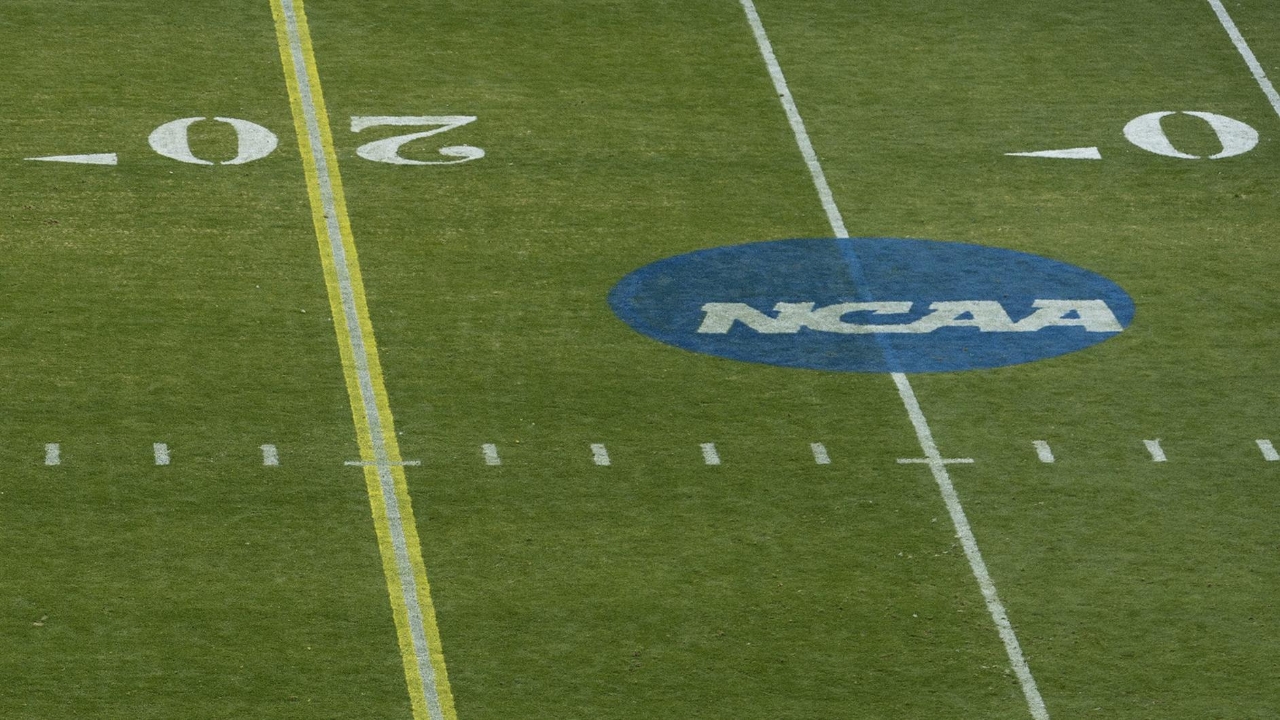
With the House v. NCAA settlement still pending approval, The Athletic senior writer Ralph Russo joined us on Thursday’s edition of TexAgs Live to talk NIL and the transfer portal. Russo also delved into the Aggies’ offensive line entering Mike Elko’s second year as head coach.
Key notes from Ralph Russo interview
- The idea of a presidential commission on college sports seems to have happened after Nick Saban and Donald Trump had a conversation in Tuscaloosa. It’s important to explain what a commission is not. It’s not a law-making body. It’s almost a think tank with the President’s power and approval. Why do we get together and talk about these issues and find solutions? Hopefully, they are actionable, it’s a good idea, and the power of the Presidency can push things along. It’s important enough to have a commission by the president. Maybe it will motivate people to have a solution and give lawmakers in Congress the motivation to cover and talk about this issue.
- Think about this perspective. They need college legislation, whether a settlement passes or not. Still, there is a lot of stuff going on in this country right now. The public loves the idea that we have immigration and tax cuts, but Congress is taking on college sports. Maybe a presidential commission is the President’s signing off on tackling the issue. None of those things can be more symbolic than they are tangible solutions that come out of the commission. They can produce ideas, but not a law.
- It’s not the President’s job to understand what is going on in college sports. If you can understand at a surface level, things are not great here. Even the people who are only dipping into it — not at the level like us, but fans — understand things don’t seem to be working here the best way for fans and athletes in schools. Understanding that, then getting to experts, this is where a commission comes in great. It’s only as good as the people sitting on a commission. Bringing experts together, some diverse thoughts and expertise and different ways of looking at this subject seems to be a good idea. It’s probably an idea that would have been effective seven to eight years ago. We are beyond college sports and the curve. It’s been a trend for two decades.
- We don’t have enough people within the space working in collegiate sports. It’s a byproduct of the way the whole enterprise is set up. Everybody is concerned about their thing. If you work in the SEC, you worry about the SEC. If you work at A&M, you worry about A&M. Everyone is most concerned about their space, hence there’s a blind spot protecting the entity at large in college football.
- With Saban being away from Alabama, it’s good to have him and others who are thinking about the entirety and not prioritizing what’s in their backyard. Is Saban the right guy? He’s outdated. What is progress? We can’t dial back on this stuff, but people need to understand that players are getting paid now. It’s a starting point. It’s figuring out now how to pay them properly in an unfair market and allow movement without infringing their rights. I worry that what Saban envisions is outdated and standing in the way of the progress that’s been made.
- NIL became the de facto salary. That’s what it transitioned into. The idea now is that revenue sharing is the salary. We are going to have a salary structure for players. The question becomes, is there NIL in third parties and collectives that are available to these athletes, can that be regulated and is not, “Here’s $500,000, sign this football.” I don’t know the answer. Can it be regulated? I think the first part is super important.
- I believe it’s not simple to fix, but I think you can rein in the movement, transfer and get it to the players with more freedom. Now they have too much. If we can regulate the transfer movement and get that down to a manageable level, then we bring the free agency market down, and they can’t renegotiate every six months. I wonder if the core of all of this is getting the transfer rules under control, the money flows with it, and it settles and is regulated to a more reasonable system.
- If we keep moving on a linear path from where we came when A&M joined the SEC, we have moved in the direction you mentioned. Whether it’s a few conferences or a super league of 60 teams, maybe the Big Ten and SEC are the paths we are moving along. Talking about someone in the industry, about the idea, the reason I’m so sure we are going that direction is that there are so many factors outside that may change the trajectory. Maybe it’s federal legislation. They say we can keep doing this with the conferences, maybe the government steps in and says it’s ridiculous. You’re hurting other schools. Maybe it’s wherever the media industry goes into a degree and bursts or plateaus.
- Higher education is in a weird spot, and many factors that affect the future of college sports are and aren’t directly tied to the future.
- I do think Mike Elko seems like his career is short enough that No. 1: Yes, the jury is still out as to what he will do at A&M. You’re more than welcome to still be cautious and optimistic. In the short term, you nailed it. They overachieved last year, and then the record became familiar. But it felt a little better from others. It felt like a good beginning.
- The O-line is huge. They didn’t go portal shopping, and Marcel Reed is the guy. It’s an interesting statement about who he is and his talent. You bring in portal receivers, who hopefully create explosive plays that were lacking last year. The running back is healthy. The defensive front is not as good, but A&M is better in the back end. I think it adds up with what you said, it’s progress, and the roster is great. But compared to the top of the SEC, you need one more full recruiting class and a freshman class to develop. They’re still a year a from banging heads with the top of the SEC.
- Texas is at the top of the SEC, and that creates an angst for the Aggies to hit a fast-forward button. We can’t be 9-3 and satisfied when Texas is competing for a national championship. I think the dynamic of what happened in Austin and College Station is interesting and accelerates the angst in College Station.
NIL
College Baseball Coach Takes Shot at Tennessee’s Transfer Portal Acquisitions
College baseball coach Paul Mainieri took a shot at some of Tennessee’s recent transfer portal acquisitions. It’s no secret that college sports have changed a lot of the years and perhaps the two biggest reasons for it are the transfer portal and NIL. In a recent interview, South Carolina baseball head coach Paul Mainieri was […]

College baseball coach Paul Mainieri took a shot at some of Tennessee’s recent transfer portal acquisitions.
It’s no secret that college sports have changed a lot of the years and perhaps the two biggest reasons for it are the transfer portal and NIL. In a recent interview, South Carolina baseball head coach Paul Mainieri was discussing some things that have changed since he left baseball, and the NIL was something he hit on.
“When I first got here last summer, we lost a lot of recruiting battles because other schools were giving a more, shall I say, appealing package to kids,” Mainieri said. “That’s the reality of the world we live in now. The schools that have a lot of money and are willing to give it to the players are getting the best players.”
Mainieri took it a step further though and specifically singled out two players that Tennessee acquired from the transfer portal last offseason and how they ended up in Knoxville.
“We were playing Tennessee, for example, and the first baseman (Andrew Fischer) and the No. 1 starting pitcher (Liam Doyle) both played for Ole Miss last year, and both had a lot of success for Ole Miss last year. Why would they change schools from Ole Miss to Tennessee? Because they like the color orange? I mean, let’s be honest.”
Fischer and Doyle have been crucial additions for Tennessee this season and regardless of how they got here, it’s become part of the game in college sports.
Follow Our Social Media Pages:
• Follow Tennessee on SI on Twitter: @VolsOnSI
• Follow Tennessee on SI on Facebook: @VOLS on SI
Follow Our Staff:
Follow Our Website
Make sure to follow our website Tennessee on SI.
OTHER TENNESSEE NEWS
NIL
Where the top 10 small forwards are committed for 2025-26 season
The college basketball transfer portal is closed following a record-setting 2025 cycle that saw more than 2,500 players enter during the 30-day window this spring. Most of the top prospects already committed elsewhere as rosters continue to take shape with programs finalizing key additions for the 2025-26 season. The 247Sports scouting team unveiled its final top 150 […]

The college basketball transfer portal is closed following a record-setting 2025 cycle that saw more than 2,500 players enter during the 30-day window this spring. Most of the top prospects already committed elsewhere as rosters continue to take shape with programs finalizing key additions for the 2025-26 season. The 247Sports scouting team unveiled its final top 150 transfer portal prospects in April, with a number of talented small forwards featured.
Of the 31 small forwards listed in the top 150, only three remain available in mid-May with the NBA Combine likely affecting those decisions. While the deadline has passed for undergraduates to enter the portal, there is no set timeline for when transfers must make their final decisions.
So, who are the top-rated college basketball transfer small forwards and where are they committed for the 2025-26 season?
RELATED (VIP): Auburn, Kentucky, Michigan headline winners of 2025 college basketball transfer portal cycle
Below is a look at the 10 highest-rated small forwards from the current college basketball transfer portal cycle and where they committed.
-
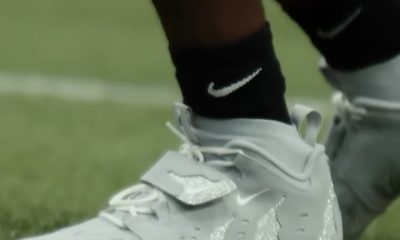
 Fashion3 weeks ago
Fashion3 weeks agoThis is poetry in motion.
-
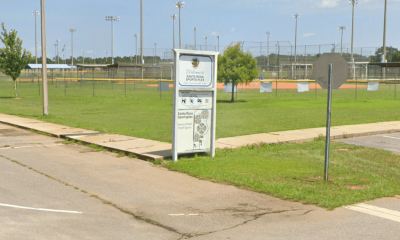
 Rec Sports3 weeks ago
Rec Sports3 weeks agoDeputies investigating incident that caused panic at Pace youth sports complex
-
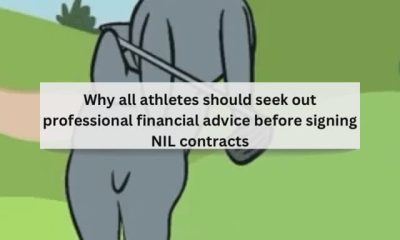
 NIL3 weeks ago
NIL3 weeks agoSave Like a Pro: NIL money isn’t free cash—taxes take a bite! Set aside part of …
-
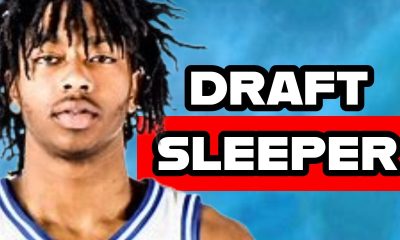
 College Sports2 weeks ago
College Sports2 weeks agoDuke basketball's Isaiah Evans on 2025 NBA Draft early entry list
-

 Fashion3 weeks ago
Fashion3 weeks agohas always dreamed in Mercurial. Now his initials are on the boots. The new Kyl…
-

 Fashion2 weeks ago
Fashion2 weeks agoHow to watch Avalanche vs. Stars Game 7 FREE stream today
-

 High School Sports7 days ago
High School Sports7 days agoWeb exclusive
-

 Sports6 days ago
Sports6 days agoPrinceton University
-

 Sports6 days ago
Sports6 days ago2025 NCAA softball bracket: Women’s College World Series scores, schedule
-

 Motorsports1 week ago
Motorsports1 week agoBowman Gray is the site of NASCAR’S “Advance Auto Parts Night at the Races” this Saturday









 Ryan Clark GOES OFF on his potential Fit | NFL Live
Ryan Clark GOES OFF on his potential Fit | NFL Live








